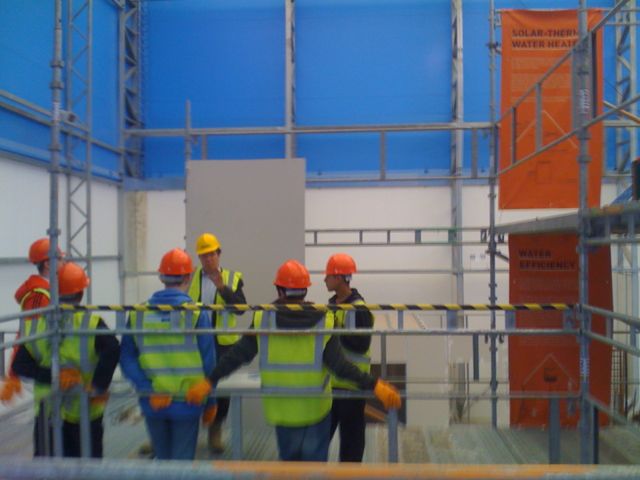I spend a lot of time at Think Up working on the design of high-impact construction training events (for examples: Constructionarium, Big Rig, Build Camp and Nuclear Island 1 & 2). What I find curious is that some things that feature strongly in the event design process never materialise on the ground; and some things that were never planned turn out to be the event highlights. Here are some of my thoughts, written on the way home from the pilot of one of our recent events, on why some things that are planned don’t actually happen, and why some of the best moments are completely unplanned.
- Vision – you have to have a powerful vision for the event should look and feel. This gives you a yardstick against which to can measure your own decisions, and is also essential for motivating and guiding the many other people you’ll need to work with. Where the vision gets lost, the components of the event that make it special tend to get lost as well.
- Confidence of the design team and the delivery team. My father’s words ring loud here, ‘a thing is only difficult if you can’t do it’. One of the factors in making our events high-impact is that they are unusual. The consequence is that the designers are often working with unfamiliar domains or approaches; the same is true for delivery partners. The low confidence that follows can lead to design decisions that chip away at the vision. The easy way to get a shot of confidence is to bring the necessary expertise into the team.
- Bolt-ons that fall off. I find that elements added to an event late in the design process are the first to fall away. They just don’t have the staying power.
- A delivery partner with a can-do attitude is invaluable. They help to breach the confidence gap (see point 2) and bring creative ideas into the design process.
- Sort the tech. There is nothing more tedious than faulty tech. As more and more of the events that I am involved with use a tech component, faulty tech is an increasingly important factor in why events don’t go to plan.
- Get the ground ready before you start. Once the event has begun, all attention is on facilitation, and the chances of completing unfinished preparatory tasks are almost nil.
- Serendipity, the secret member of the design team. You can’t plan for everything. A better approach is to be ready to turn issues into learning opportunities as they crop up.
- It’s happening under your nose. I’ve stated the importance of vision in creating a high-impact event, but for some the most valuable learning outcome may not what you planned it to be. Being to fixated on your own vision may blind you from seeing other people’s lightbulb moments.
- It takes concentration There’s always lots to think about when planning and running a learning event. In my experience, how well the event goes to plan is significantly impacted by the levels of confidence of the lead facilitator. Things don’t grind to a halt if you don’t concentrate, but corners start to get cut, participants revert to more traditional behaviours, and the vision is weakened.
- The effect of event entropy – I think there is a connection between the tendency for a high-impact event to lose quality over several repetitions, and the second law of thermodynamics, that a system will always tend towards greater disorder. It is as if the event vision is some sort of ordering process. Over time, the vision is eroded, the quality is lost. Increasing the order in a system requires energy. Maintaining the vision requires injection of energy – of another sort – and it is easy to forget that.



Leave a Reply